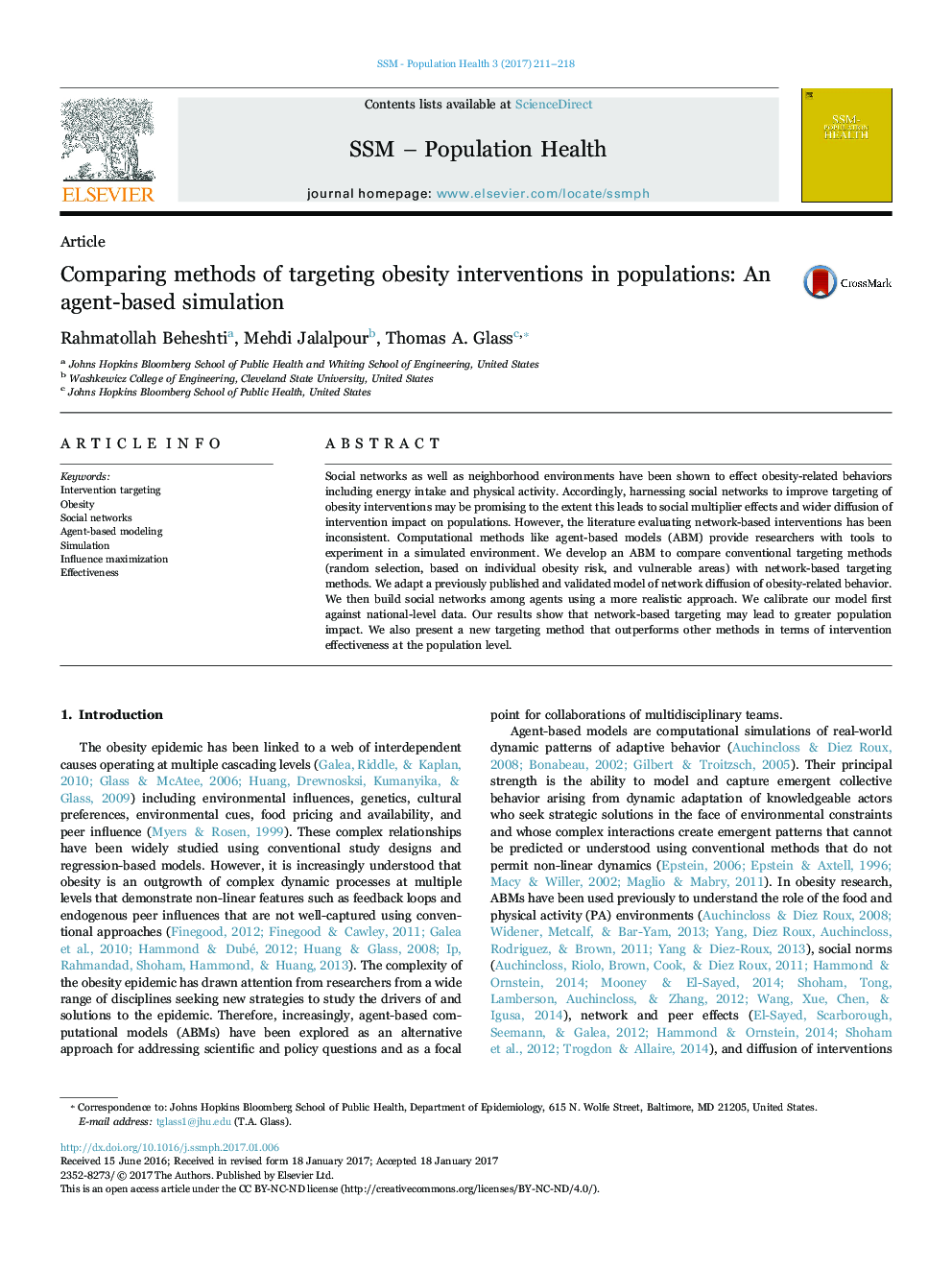| Article ID | Journal | Published Year | Pages | File Type |
|---|---|---|---|---|
| 5123251 | SSM - Population Health | 2017 | 8 Pages |
â¢While behavioral interventions exist for obesity, uncertainty remains about how best to target those interventions to maximize population-level impact.â¢Agent-based models are simulation tools that can be used to evaluate different targeting strategies to help policy makers.â¢Targeting intervention resources using social networks may lead to greater population impact of behavioral interventions compared to traditional methods of targeting.
Social networks as well as neighborhood environments have been shown to effect obesity-related behaviors including energy intake and physical activity. Accordingly, harnessing social networks to improve targeting of obesity interventions may be promising to the extent this leads to social multiplier effects and wider diffusion of intervention impact on populations. However, the literature evaluating network-based interventions has been inconsistent. Computational methods like agent-based models (ABM) provide researchers with tools to experiment in a simulated environment. We develop an ABM to compare conventional targeting methods (random selection, based on individual obesity risk, and vulnerable areas) with network-based targeting methods. We adapt a previously published and validated model of network diffusion of obesity-related behavior. We then build social networks among agents using a more realistic approach. We calibrate our model first against national-level data. Our results show that network-based targeting may lead to greater population impact. We also present a new targeting method that outperforms other methods in terms of intervention effectiveness at the population level.
